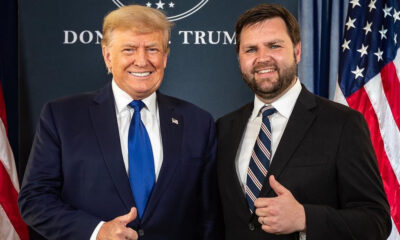Reviews
VWAP in Trading: How It Works and Why It’s Important for Traders

The Volume Weighted Average Price (VWAP) is a popular technical indicator used by traders to gauge the average price at which a stock has traded throughout the day, based on both volume and price.
Understanding what is VWAP in trading can be valuable for those looking to make informed decisions in fast-paced markets.
By tracking the VWAP, traders can better assess the stock’s price trend, aiding in deciding when to enter or exit positions.
This tool provides insights into whether a stock is trading above or below its average price, helping traders determine potential buying or selling pressure.
VWAP has become essential for traders aiming to improve strategy and performance in the market.
What is VWAP?
VWAP, short for Volume Weighted Average Price, is a trading reference point that informs traders and investors of the average price at which a security has traded throughout the day, factoring in both volume and price.
It’s valuable because it offers a glimpse into a stock’s trend and worth.
VWAP merges pricing components with volume to offer traders a more detailed perspective than if they merely considered the price.
Visualize it as computing the mean price paid per share of every transaction within a day, assigning more value to transactions with higher trading volumes.
This approach ensures that larger trades do not distort the understanding of the authentic market situation.
Comprehending VWAP assists traders in making informed decisions by delineating potential support or resistance levels.
How VWAP is Calculated
Traders determine VWAP by multiplying the traded volume at each price level by the price and then dividing the total sum by the total volume.
This offers a more comprehensive view of price trends compared to relying solely on the closing price.
Formula
The Volume-Weighted Average Price (VWAP) equation amalgamates the price of stocks and their volume to find an average.
This equates to multiplying the price of each transaction by its volume before accumulating these and dividing by the total transacted volume.
It attributes more significance to transactions with a heightened volume, establishing it as a genuine market value benchmark over time.
If a stock operates at differing prices throughout the day, VWAP inspects the amount purchased or sold at each price point.
By conducting this computation, traders acquire a fair perception of whether they are entering the stock at a commendable price compared to others.
Example Calculation
Evaluating the Volume-Weighted Average Price (VWAP) aids traders in interpreting the mean price a stock has been traded at during the day, factoring in volume and price.
It proves particularly beneficial for day traders and fund managers to discern market patterns and formulate trading decisions. Here’s the process you can follow to compute VWAP:
- Initiate by identifying each transaction in the stock under consideration.
- Take note of the price point at which each transaction transpired.
- Document the number of shares (volume) dealt at each price point.
- Multiply the transaction price by the volume of each transaction. This provides the worth of each transaction.
- Sum up all these worth from every transaction made during the day.
- Compute the aggregate volume of shares dealt for the day by summing up all individual volumes.
- Divide the aggregate worth from step 5 by the aggregate volume from step 6.
This method will provide you with the VWAP of security for the given trading day, offering perspective into both its pricing and liquidity facets over a specified timeframe.
It aids in formulating more informed decisions, whether for entry or exit points or interpreting market patterns, compared to simple moving averages, which might lack this depth of comprehension due to not taking into account volume.
Significance of VWAP in Trading
VWAP plays a crucial role in trading as it serves as an indicator of market trends and provides traders with a benchmark for evaluating their trading performance.
Using VWAP enables traders to make informed decisions based on the true market value, especially for day traders and money managers seeking to refine their trading strategy.
Indicator of Market Trend
VWAP offers valuable insights into determining the authentic market value beyond basic moving averages.
Benchmark for Trading Performance
VWAP serves as a benchmark for evaluating trading performance. It offers traders an average price over a specific period, allowing them to measure their execution against this indicator.
By comparing their actual trade prices to the VWAP, traders can evaluate how well they performed relative to the market trends and make informed decisions on future trading strategies.
This straightforward yet potent tool is widely used by day traders, money managers, and algorithmic trading systems to ensure that their trades reflect the true market value.
Traders find VWAP particularly useful in intraday trading as it provides a reference point for assessing their performance throughout the trading day.
Using VWAP in Trading Strategies
Traders use VWAP to develop support and resistance levels, identify entry and exit points, and compare them with simple moving averages to refine trading strategies.
It is a valuable tool for day traders, offering insights into intraday market trends and assisting in the execution of successful trading strategies.
Support and Resistance Levels
Support and resistance levels play an important role in trading strategies. VWAP aids traders in identifying these levels, representing points where the price trend is likely to encounter barriers.
By comparing the current VWAP with historical data, traders can identify potential support or resistance areas to make informed entry and exit decisions.
This helps day traders and money managers devise effective trading strategies based on these key price levels, thus enhancing their overall performance.
Entry and Exit Points
Having identified support and resistance levels, traders can leverage the VWAP to determine entry and exit points for their trades.
When the price crosses above the VWAP, it may signal a potential entry point for buying as this indicates that the security is potentially undervalued in comparison to the average traded price throughout the day.
Alternatively, when the price falls below the VWAP, it could indicate a potential exit point or selling opportunity.
Traders often use these signals in conjunction with other indicators or chart patterns to confirm their trading decisions.
By using VWAP as one of several factors under consideration, traders aim to optimize their entry and exit timing decisions to enhance trading performance and capture favorable price movements within intraday trading scenarios.
Comparing VWAP with Simple Moving Average
Comparing VWAP with a Simple Moving Average helps traders make informed decisions. Here’s a straightforward comparison:
| Feature | VWAP (Volume Weighted Average Price) | Simple Moving Average (SMA) |
| Definition | Calculates the average price of a security, factoring in volume. | Calculates the average price over a specific period, not considering volume. |
| Importance | Reflects the true average price weighted by volume. | Shows the general market direction. |
| Use Case | Used by traders to gauge market depth and liquidity. | Used to detect potential trend reversals and support/resistance levels. |
| Calculation Complexity | More intricate, and incorporates both price and volume. | Less complicated, and considers average prices only. |
| Best For | Intraday trading and concise-term strategies. | Extensive-term trading approaches. |
| Pros | Offers a more precise price for transactions with significant volume. | Straightforward to compute and understand. |
| Cons | May be too meticulous for extensive-term investors. | Lacks volume consideration, which may result in imprecise signals. |
This comparison indicates that VWAP and SMA fulfil different trading roles. Grasping both can improve trading tactics.
Final Thoughts
VWAP serves as a vital tool for traders, signifying market trends and providing a standard for trading performance.
Incorporating VWAP into trading strategies can assist in identifying support and resistance levels, as well as entry and exit points.
This volume-weighted average price is essential for both novice and experienced traders to make well-informed decisions in the ever-changing stock market landscape.

-

 World3 days ago
World3 days agoEthiopian volcano erupts for first time in thousands of years
-

 Legal1 week ago
Legal1 week agoMichigan man JD Vance sentenced to 2 years for threatening Trump and JD Vance
-

 Legal1 week ago
Legal1 week agoWoman in critical condition after being set on fire on Chicago train
-

 World1 week ago
World1 week agoHurricane Melissa registered 252 mph wind gust, breaking global record
-

 Legal8 hours ago
Legal8 hours agoUtah Amber Alert: Jessika Francisco abducted by sex offender in Ogden
-

 Legal6 days ago
Legal6 days agoSuspect in San Diego stabbing shot by authorities after fleeing into Mexico
-

 Legal1 week ago
Legal1 week ago1 dead, 2 injured in shooting at Dallas Walmart parking lot
-

 Health6 days ago
Health6 days agoMarburg virus outbreak in Ethiopia grows to 6 confirmed cases




